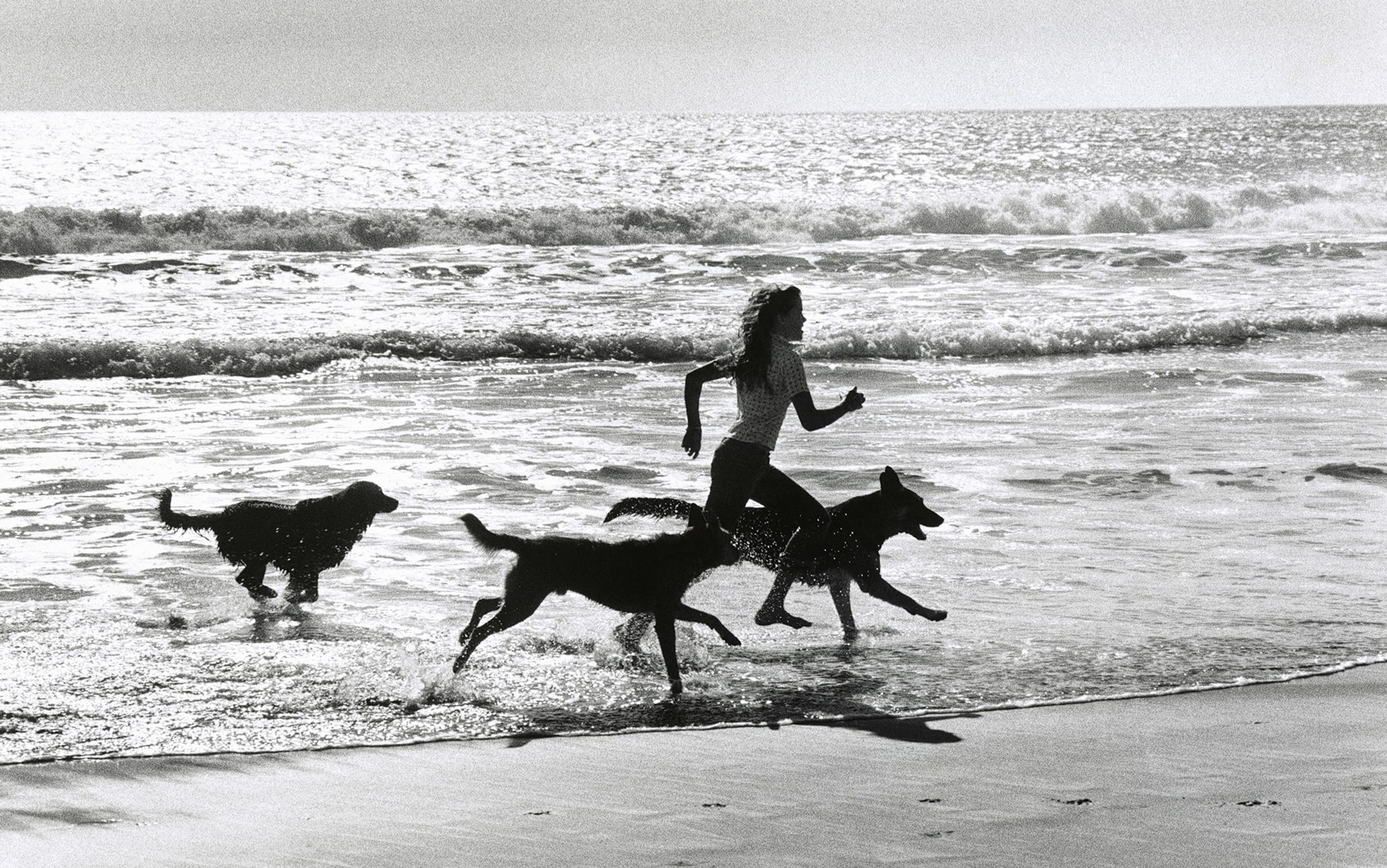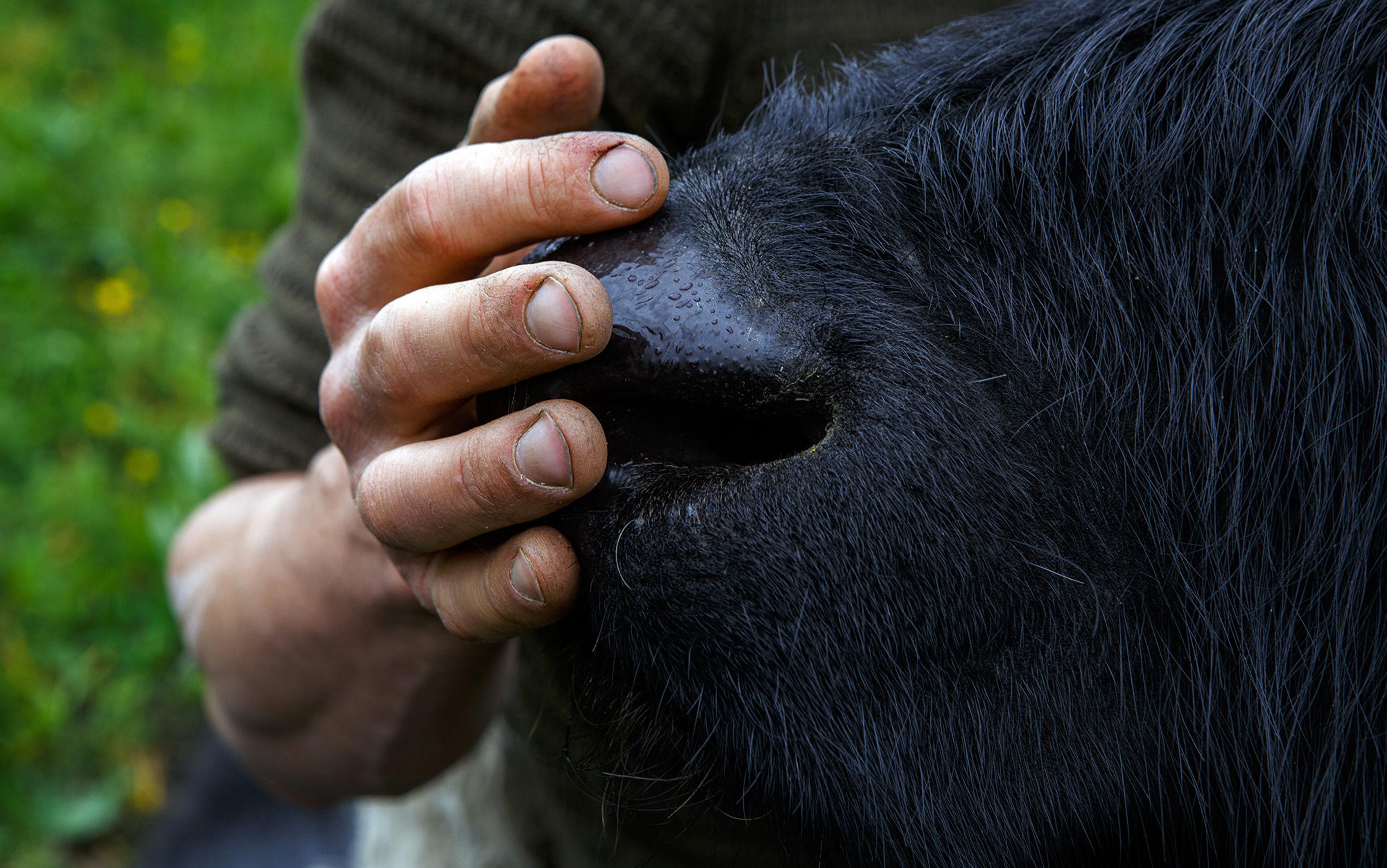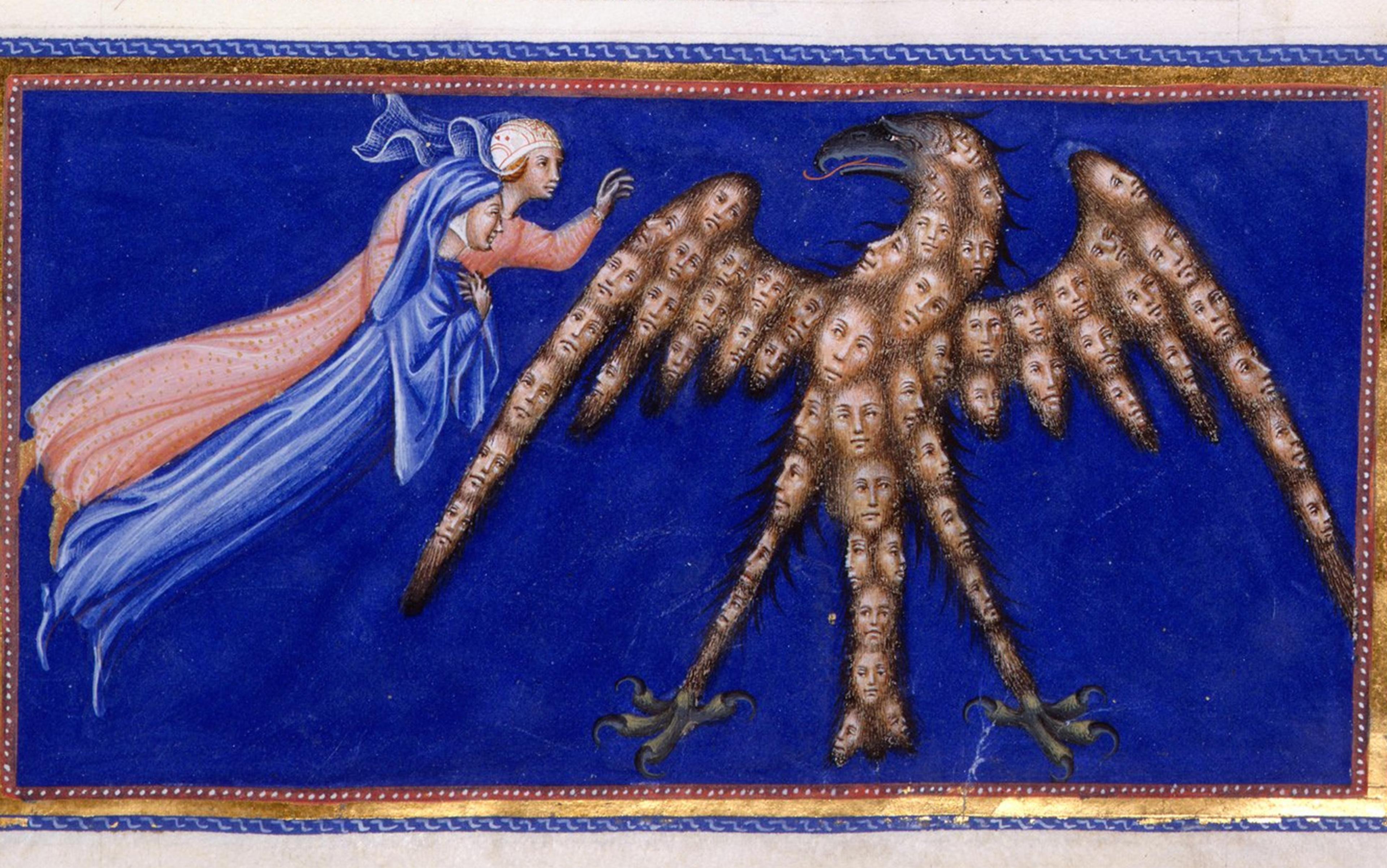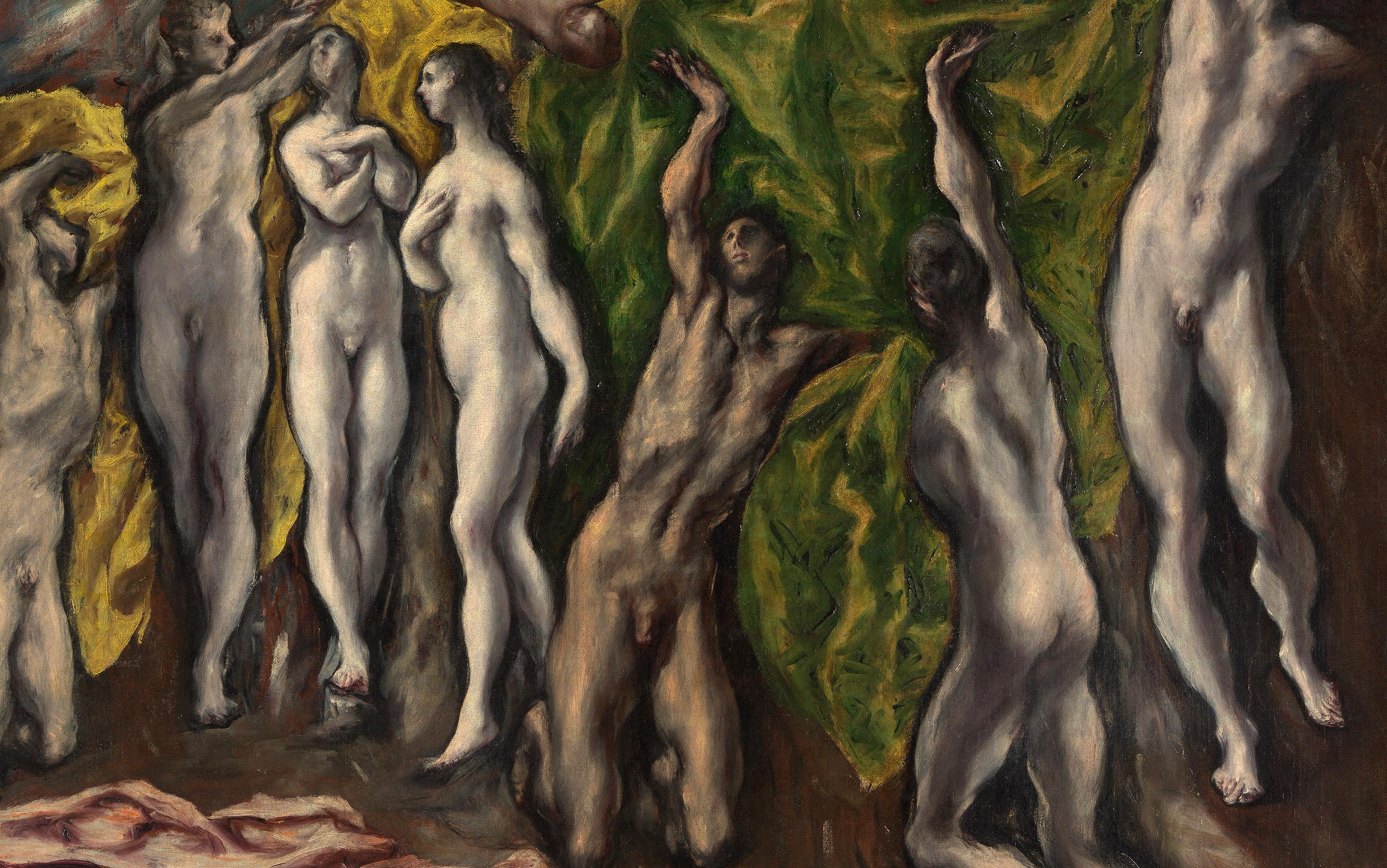Most ancient traditions, not only Christianity, picture the universe as an involution of divine love. It emanates from an origin that precedes frail beings. According to a hymn of creation in the Rig Veda, love is a fundamental presence: ‘In the beginning arose Love’ – or Kāma in Sanskrit: the love that sparks desire and vitalises consciousness through practices of yogic attention. In mystical Islamic traditions, love is similarly comprehended as an external power more than an emotion. For the Sufi, love forces believers, who are called lovers, out of themselves towards the Beloved, who is God. Even Stoicism was originally a discipline for discovering that the world is shaped by the Logos, or active word of creative love.
Today, this appreciation of reality, with its ‘built-in significance’ and ‘admirable design’, to quote C S Lewis, has become a ‘discarded image’. Any curious person enquiring of the universe now, and inspired by science, might feel themselves to be confronted by a reality of unknown or unknowable significance, or of no significance at all. Moreover, such doubt or confusion seems to be the price of rejecting a fanciful worldview for a scientific one. Apprehending the universe no longer consists of an awesome realisation that your mind fits the divine mind to some degree, but becomes one of uncertain, probing wonder: intellectual humility threatened by cognitive humiliation. Nor can anyone who is suffering turn to myths and rituals conveying the purposes of a love that exceeds and might contain their afflictions; they must bear their woe alone or, if they are lucky, in solidarity with similarly isolated others.
As a psychotherapist, I feel sure this feeling of existential seclusion exacerbates distress as well as other symptoms, like excessive consumption or spiritual discontent. Although the prevalence of suffering is given as a prime reason to reject the existence of divine love, paradoxically, I suspect its dismissal has made suffering worse. The healing power of having suffering recognised and understood, even when its causes remain, is a phenomenon that anyone engaged in caring will know. To be with suffering, which is more than just to witness it, is to be vulnerable, which can in turn bring an awareness that love and connection are basic and immovable. This is why people attest to finding God in suffering, regardless of rational objections. That mystery is central to any sure – as opposed to merely asserted – conviction that there is divine love.
Love is the formidable helpmate of our attention. This was something on which the philosopher Simone Weil, who famously took upon herself the sufferings of others, insisted – refusing, for example, to consume more that the miserable rations allowed her compatriots in France, when she was confined to a hospital bed in London in 1943. ‘By loving the order of the world we imitate the divine love which created this universe of which we are a part,’ she wrote.
Put another way, love was considered a universal force and a matter for knowledge, integral to the warp and weft of reality, not just a beneficent feeling or costly duty, practised at a personal level in acts of compassion or charity. When someone received love or gave it, they aligned themselves with the fundamental vitality pulsing through them and everything else. Sun and moon, mountains and seas, plants and birds, beasts of water and land. Everything participated in a common movement of love that would eventually return them to their source and sustainer.
Human beings could intentionally attend to this dynamic and collaborate with it. But, if not, if love is demoted from this role it becomes, at best, a moral ideal or emotion, exapted from evolution and sustained by the brain. Metaphysical agnosticism has replaced ‘ontological rootedness’, to borrow from the philosopher Simon May. Little wonder people feel disorientated or worse. To misquote R D Laing: someone who describes love as an epiphenomenon might be a great scientist, but someone who lives as if love is so will need a good psychiatrist.
But might the older notion of love be returning, as Weil and others have hoped? Might we be moving past the Romantics, who strove to comfort modern minds disturbed by what William Wordsworth called the ‘still, sad music of humanity’ because we are coming to know once more of that ‘holier love’? Might love be not just all you need, but something precisely required to account for who we are and all that is?
Provocative hints that challenge a reflexive discounting of the enchanted vision, and which might spur a shift by reorientating attention and re-opening avenues of perception, can be drawn from moral philosophy, trends in contemporary biology and by considering the nature of intelligence. Consider first the moral issue. It begins with the observation that uncoupling love from its divine telos, and redescribing it solely in terms of evolved behaviours and all-too-human desires, has had unintended consequences. In particular, the secular turn has inverted the dictum that God is love, and made love a god, encouraging a sentimentalisation of love – a sappy deity for an otherwise godless age. Worse, the reversal excites a demand that is impossible to meet, by tasking humans with offering the unconditional love that, until a couple of centuries ago, would have been taken as coming only from God.
When unconditional love was known as a divine emanation, to claim that capacity for oneself, or to ask it of another, was a form of madness or idolatry. But now everyone is supposed to deliver and receive it, and overlook that we mortals are flawed and floundering. For such reasons, the psychoanalyst Jacques Lacan proposed that, in a world without God, love is more honestly defined as a pact. ‘To love is, essentially, to wish to be loved,’ he said: in other words, I’ll give you what we can call love, if you offer me the same. The trouble is, such deals undermine and destroy love, as the philosopher and novelist Iris Murdoch realised. Compromise and trade-offs are part of life, yes, but love’s whole point is to draw us beyond the transactional and mediocre. Consider the nature of creativity, Murdoch writes in The Sovereignty of Good (1970): ‘The true artist is obedient to a conception of perfection to which his work is constantly related and re-related in what seems an external manner.’ Love is likewise not fired by injunctions such as ‘Improve a little’ but rather by the call ‘Be perfect!’
The transcendent end to which love leads needn’t be called God, Murdoch felt, though it must be recognised as superhuman and excellent. Following Plato, she called it the Good, ‘the magnetic centre towards which love naturally moves,’ which also reveals the nature of love’s energy. ‘Love is the tension between the imperfect soul and the magnetic perfection which is conceived of as lying beyond it,’ she continued. That ‘beyond’ is the key thought here, with its intuition that what is most longed for is independent of us. Love is active in the psyche that hopes to know more than is currently even conceivable. To foreclose that transformation not only thwarts love, it is dehumanising; since to be human is to yearn for contact with more.
This ‘sovereignty of good’ is impressive, given the way it appears to call us, make demands upon us, and not let us go. But is that the same as affirming love’s transcendent actuality? Some biologists, it seems, are developing a worldview that invites the possibility.
Instead of phrases like ‘the mating season’, Darwin prefers ‘the season of love’
The move is happening in two steps: a first that can be characterised as bottom-up; a second, top-down. The bottom-up element stems from the revised picture of the living world that has been emerging in recent years. This new thinking has left behind the reductive view of life, characterised by Richard Dawkins as driven by selfish genes, to appreciate that cooperative, holistic and interdependent creaturely processes operate at and between all levels of life, from proteins and genes to the organism as a whole – and beyond, including ecological interactions with the so-called external environment.
It’s a fractal picture, driven by the explanatory power derived from considering how wholes matter quite as much as parts. Patterns of interaction that are present at the micro-level are amplified and transformed at the macro-level, with that in turn affecting the granular. Homologous parallels can be detected across species, too. What manifests as attraction and cooperation in simpler organisms becomes altruism and empathy among the more complex, with love capping the pyramid. Building on the foundations laid by biologists like Lynn Margulis, who championed symbiosis in evolution, and developed in books such as Interdependence (2015) by the biologist Kriti Sharma, the new picture changes the status of love from epiphenomenon to an emergent quality, springing from antecedent forms discernible within all sorts of interactions and behaviour; if love in all its fullness is present only in creatures like us, capable of forming intentions and consciously acting sacrificially, then love’s forerunners run all the way down the chain of living entities.
This, incidentally, is akin to the opinion of Charles Darwin. In The Descent of Man (1871), he discusses the ‘love-antics’ of birds, alongside using functional terms such as ‘display’, and instead of phrases like ‘the mating season’, he prefers ‘the season of love’. But he proposes something else, too. While nascent forms of love might evolve alongside the practicalities of survival – caring for offspring, for example – others, such as meeting aggression with kindness or loving enemies, would need ‘the aid of reason, instruction, and the love or fear of God.’ Which brings us to the top-down revision within biology. It shares the vision of an interplay of life processes across levels. But where the bottom-up biologists detect empathy and its precursors in the behaviour of a range of animals, the top-down revisionists are sceptical that complex psychological capacities like empathy exist in any creatures except humans.
In From Extraterrestrials to Animal Minds: Six Myths of Evolution (2022), the evolutionary biologist Simon Conway Morris examines the evidence for empathy in creatures from crows to chimps, and finds the data wanting. The matter is subtle and often raises hackles, but the crucial point is that context matters. The environment in which animals live shapes how they behave, as it does with humans, but for nonhuman animals context radically determines what behaviour is possible in the first place. Empathy is a case in point, because being moved by the suffering of a stranger, for instance, is morally significant when it can happen regardless of context, which no other animal appears capable of. ‘It is far from clear that our nearest cousins are anywhere near a moral dimension,’ Conway Morris concludes.
His alternative proposal, in line with Darwin’s conclusion about what it takes to love enemies, is that humans can access and align with moral verities, by virtue of being aware of a transcendent dimension that has not emerged, but been discovered. The human capacity for emotional self-regulation, say, and the ability to have sympathy with radically diverse perspectives, means that we can be open to the revelation of moral features of reality, top-down. The implication is that, while there are certainly analogues to love in other parts of the animal kingdom, these do not form complete pathways for evolutionary development. Rather, our ancestors have readied us for the perception of a love that pre-exists us.
Needless to say, the top-down conclusion is controversial, given the overtone of human exceptionalism, to say nothing of the implication that the creatures we love may not equally love us back. But the enquiry can be nudged along by extending the matter of what we know and turning to the question of how we know anything at all. In this, what we attend to is crucial.
Consider a delightful anecdote told to me by the astronomer Bernard Carr. A former colleague of Stephen Hawking, Carr joined him at the premiere of the film about Hawking’s life, The Theory of Everything (2014). Carr was paying attention and, as they watched, an irony dawned in his mind. ‘The film was primarily about Stephen’s personal relationship with Jane, his first wife,’ he explained, ‘even though personal relationships and emotions, indeed mind itself, will probably never be covered by any Theory of Everything.’ In short, the film gave the lie to the aspiration to derive a complete account of existence from physics alone, and the reason is obvious: love is real and routinely experienced by human minds; but scientifically speaking, love can be evidenced only indirectly, by measuring the after-effects it leaves in its often-turbulent wake.
That first-hand quality is a feature of many types of knowledge. You can learn a lot about swimming by reading about swimming, but you can never learn how to swim from books. Even knowledge that can be captured in words or equations has a participatory dimension, of which the words and equations are tokens. Humans don’t only calculate but also comprehend, which the philosopher Mary Midgley in Wisdom, Information and Wonder (1989) described as arising from ‘a loving union’. Her point is that knowledge is never merely information amassed, like a digital dataset, but involves an intentional engagement with whatever the information might be about, that latter element being the revelatory issue. Intelligence rests on a dialogue with the world; flow is the feeling of immersion in the exchange. And it is love that invites us in.
Love is an active ingredient of our intelligence in another way. Consider the welter of sense-perceptions that bombard us all day, every day. The cognitive psychologist John Vervaeke argues that we can make sense of the avalanche of what we see, hear, smell, taste and touch through what he calls ‘relevance realisation’; we do not sort through the data, as an AI might, but care for some things above others, and thereby spontaneously spot what matters through the maelstrom. With the exception of the occasional sociopath, people are drawn by what is good, beautiful or true; these qualities organise things for us, even when we are not entirely clear what the good, beautiful or true might be. The ‘transcendentals’, as they were traditionally known, therefore have an objective character, even leading us over current horizons of perception to discover new insights. Weil put it like this: ‘The beauty of the world is the order of the world that is loved.’
When a river enters a larger body of water, the words of Indigenous languages allude to love
Suffering is integral to a searching intelligence, too. Breakthroughs often occur after breakdowns because wisdom tends to arise not with the accumulation of knowledge, but when an old mindset or worldview gives way – a process that is typically troubling and traumatic. But in that transition we are met, which is why a discovery may be greeted with a delighted exclamation: Eureka! Our minds can knowingly resonate with a wider intelligence, in a way that’s seemingly unavailable to other creatures. The pattern of seeds on a sunflower’s head may manifest a Fibonacci sequence, but humans can spot the mathematical and almost musical regularity – and, driven by love, delight in it.
My suspicion is that noticing the felt experience of our connection with the natural world, the associated moments of beauty and revelation, and concluding that the resulting joy is given as a gift, is part of the reason that Indigenous ways of knowing are reviving. ‘Indigenous peoples live in relational worldviews,’ explains Melissa Nelson, a professor at Arizona State University, whose heritage includes Anishinaabe, Cree, Métis and Norwegian. Nelson refers to the notion of ‘original instructions’, which is the array of rituals, myths and patterns around which Indigenous ways of life are organised, together aimed at deepening communion between humans and the more-than-human. She tells me: ‘There is a nurturing quality to the universe that is for us like a natural law, a universal principle that we can tap into: this field of love that is the matrix of the universe.’ The significance for environmental and ecological concerns is obvious.
What’s particularly striking is that analogues of love are perceived in the interactions of the so-called inanimate world, too. For example, when a river enters a larger body of water, the word used in several Indigenous languages alludes to love, Nelson says. Alternatively, viewing the planets or stars can be experienced as a relationship: receiving a quality of light that simultaneously lights up the soul – an insight remembered in words like ‘influence’, which originally meant stellar inflow.
To my mind, there are implications, here, for re-envisioning the place of humans in the world: part of the distinctiveness of our task is to bring this richness to mind. That can make a difference insofar as it increases the attention afforded to love. ‘We live in dire poverty in many places,’ Nelson continues, referring to spiritual as well as material need. ‘But we have this profound understanding of love being a cosmic universal force, that comes to us from the natural world and from the universe as a whole. That really strengthens us in terms of our embodiment and survival, and to thrive and regenerate.’
This kind of awareness might be called a participatory consciousness, and it’s been part and parcel of Western ways of knowing, too. The reciprocity has tended to be discounted since the birth of modern science because of the way dispassionate objectivity is valued, a stance that has brought gains. But perhaps for not much longer. ‘We do not obtain the most precious gifts by going in search of them but by waiting for them,’ Weil observed, because gifts are given in love and spotted by the right quality of attention.
The ramifications of reincorporating something of the premodern view are far reaching. Existential loneliness can be tried, found wanting, and reframed: it’s not all in your head. Or there is the feeling of wonder and connectedness that comes with awareness of the extraordinary nature of reality. The experience is offered a rationale: our minds fit the intelligence that shapes the world. Maybe, too, a love recognised as drawing us can invite us to stop trying to turn our corner of the universe into a tortured, technological paradise, and instead consider how we might design ways of life that deepen our attention, better harmonise with the planet and our nonhuman fellows, and even raise awareness of its divine wellspring. We might want to attend to the best once more, and bear what it takes to commune with this abundance, because there is a cosmic love and we can move with its power, along with everything else that is.






